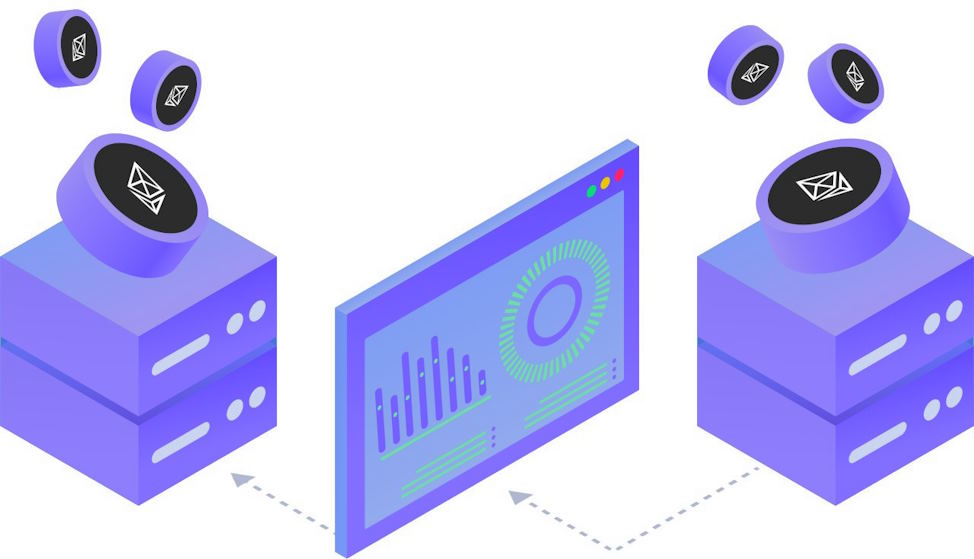
Proof of Stake Security: How PoS Enhances Blockchain Network Protection
— May 31, 2023As blockchain technology continues its rapid evolution, diverse consensus mechanisms have surfaced to address the limitations of traditional PoW. PoS, one of the most prominent alternatives, stands out by securing networks through a fundamentally different approach. Unlike PoW, where miners compete to solve complex mathematical puzzles to validate transactions and create new blocks, PoS leverages participants’ financial stake in the network as the basis for validating transactions. This shift not only eliminates the resource-intensive nature of PoW but also introduces a range of security enhancements that redefine how we safeguard blockchain networks.
Navigating the Landscape of Proof of Stake (PoS)
In the dynamic landscape of blockchain technology, where innovation unfolds at an unprecedented pace, the exploration of diverse consensus mechanisms is inevitable. Among these, Proof of Stake (PoS) emerges as a standout contender, offering an alternative path to network security. Departing from the resource-intensive PoW, where miners race to solve intricate mathematical puzzles, PoS leverages the concept of participants’ financial stake as the cornerstone of transaction validation. This fundamental shift not only resolves the energy concerns posed by PoW but also introduces an array of security enhancements that redefine the standards of safeguarding blockchain networks.
PoS operates on a straightforward premise: the more cryptocurrency a participant holds and “stakes,” the more likely they are to be chosen to validate transactions and create new blocks. This principle creates a self-sustaining ecosystem of validators who have a vested interest in maintaining the network’s integrity. Notably, PoS inherently curtails the massive energy consumption that plagues PoW networks, as it eliminates the computational race inherent in PoW mining. Consequently, PoS networks achieve higher energy efficiency and contribute to a more ecologically sustainable blockchain landscape.

The Security Paradigm of Proof of Stake
At the heart of PoS lies a security framework that differs substantially from PoW. One of the standout features of PoS is its mitigation of the Sybil attack, a vulnerability where an attacker creates numerous fake identities to gain control over the network. In a PoS network, creating multiple identities, or “staking nodes,” is financially prohibitive due to the requirement of locking substantial amounts of cryptocurrency as collateral. This financial commitment ensures that participants have genuine intentions, as their stakes are at risk if they engage in malicious behavior.
Moreover, the notorious 51% attack, prevalent in PoW networks, is notably challenging to execute in PoS systems. In PoW, an attacker with more than 51% of the network’s computational power can manipulate transactions and even rewrite transaction history. In contrast, PoS networks demand a majority of the cryptocurrency supply to launch such an attack. Given that accumulating such a significant portion of the cryptocurrency supply is arduous, PoS networks inherently bolster security against this form of assault.
Another compelling security facet of PoS is the prevention of long-range attacks. In PoW, attackers can exploit the blockchain’s history to rewrite transactions from a considerable time ago. PoS networks, on the other hand, establish “finality” mechanisms that make such revisions extremely challenging, enhancing the overall immutability and security of the blockchain.
The Case Studies of PoS-based Blockchain Security
Ethereum 2.0, the highly anticipated upgrade to the Ethereum network, illustrates the remarkable potential of PoS in enhancing security. This transition from PoW to PoS not only addresses scalability and energy concerns but also introduces an advanced security model that leverages validators’ financial stake. Similarly, Cardano stands as a testament to research-driven PoS implementation, boasting unique security features forged through academic rigor.
Polkadot introduces a heterogeneous sharding architecture combined with PoS, exemplifying how novel approaches to consensus can synergistically amplify network security. These case studies underscore the practicality of PoS in real-world scenarios and exemplify its potential to reshape the security landscape of blockchain networks.

Challenges and Considerations
While PoS offers substantial security enhancements, it also faces challenges. One notable concern is the initial stake distribution and potential centralization risks. Addressing this concern requires innovative solutions to ensure a fair and decentralized distribution of stakes. Moreover, economic and game-theoretical considerations come into play, necessitating a delicate balance between incentivizing active participation and maintaining network integrity.
Upgrade and hard fork challenges also arise in PoS networks, as changes to consensus algorithms can impact the dynamics between validators and the overall network. Robust testing and community engagement become pivotal in mitigating these challenges and ensuring the seamless evolution of PoS-based blockchains.
The Path Forward: PoS and Decentralization
PoS introduces a nuanced perspective on the decentralization debate. While PoW decentralization is rooted in computational power, PoS redefines it through economic influence. The transition to PoS represents an opportunity to redefine the decentralization narrative, emphasizing participation and stakeholding rather than sheer computational prowess.
Striking the right balance between security and network openness is a crucial consideration. PoS networks must maintain security while ensuring that entry barriers are not so high as to hinder network inclusivity. As the technology evolves, the community must actively engage in discussions to refine this balance and ensure the ethos of decentralization thrives.





